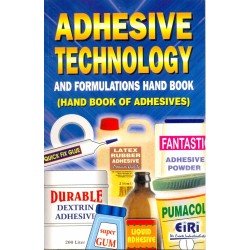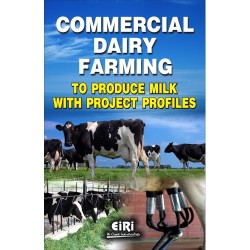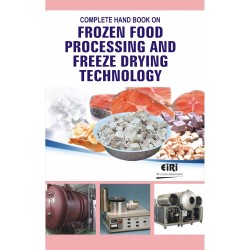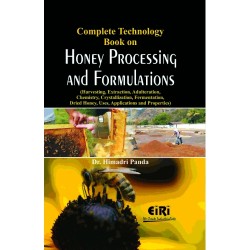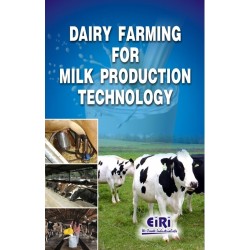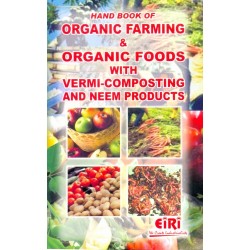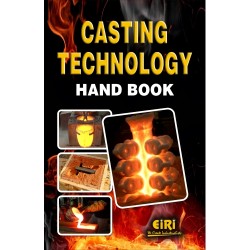eBook on Technology of Confectionery, Chocolates, Toffee, Candy, Chewing & Bubble Gum, Lollipop and Jelly Products with Formulations
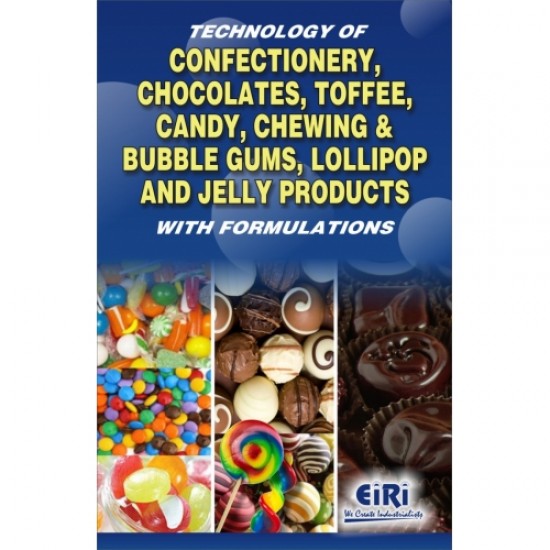
- More than 40 years of experience
- Managed by expert industrial consultants
- ISO 9001-2015 Certified
- Registered under MSME, UAM No: DL01E0012000
- 24/5 Research Support
Get your quesries resolved from an industry expert. Ask your queries before report or book purchase. - Custom Research Service
Speak to the our consultant to design an exclusive study to serve your research needs. - Quality Assurance
All reports are prepared by highly qualified consultants & verified by a panel of experts. - Information Security
Your personal & confidential information is safe & secure.
Contents-cum-Index for E-Book
Chapter 1
Confectionery Products
- Sugar confectionery
- Nutritional significance
- Principles of sugar confectionery production
- A range of sweets for sale
- Degree of inversion
- Time and temperature of boiling
- Boiling point of sucrose solutions
- Moisture content
- Added ingredients
- Types of sweets
- Fondants and creams
- Gelatin sweets
- Toffee and caramels
- Hard-boiled sweets
- Processing
- Boiling
- Cooling
- Equipment required
- Beating
- Forming/setting
- Packaging
- Suitability for small-scale production
- Multi-coloured aerated confectionery products
- Method of Preparation
- Confectionery product and preparation
- Coolant Compositions
- Flavour Compositions
- Coolant and Flavour Release Profiles
- Manufacturing Methods
- Confectionery compositions with magnolia bark extract
- Confectionery Formulations
- Pressed Tablet Formulations
- Fruit and nut-containing confectionery candy
- Reduced Sweetness Confectionary Compositions
- Reduced Sweetness Confectionery Coatings/Fillings
- Cereal Bars and Other Cereal Products
- Baked Products and Other Products
- Processes For Associating Confectionery Coating Compositions With Food Items
Chapter 2
Manufacture of Toffee
- Biodegradable toffee gum
- Manufacturing of Polymers
- Polymer No. 101
- Polymer No. 102
- Polymer No. 103
- Polymer No. 104
- Polymer No. 105
- Polymer No. 106
- Preparation of Toffee Gums
Chapter 3
Gum and Jelly Products
- Production Of Gum and Jelly Products
- Cooking process
- Batch production
- Continuous production
- Depositing process
- Recipes
- Manufacturing
- Jelly fruits with Pectin Classic AS 501
- Manufacturing
- Jelly fruits with Pectin Classic CS 501
- Manufacturing
- Jelly fruit with low acidic taste with Pectin Amid CS 005
- Manufacturing
- Pectin bears with Pectin Classic AS 507
- Manufacturing
- Pectin pastilles with Pectin Classic CS 502
- Manufacturing
- Jelly fruit containing fruit pulp with Pectin Classic AS 502
- Manufacturing
- Fruit gums: Combination Pectin Classic AS 502 / gelatine
- Manufacturing of the semifinished product
- Manufacturing of the final product
- Jelly fruit layer for biscuits with chocolate cover using Pectin Classic AS 501
- Manufacturing
- Zefir with Pectin Classic AS 401
- Process for preparing caramel
- Multi-layered fondant containing chewing gum
- Flavour
- Sensate
- Taste
- Functional Agents
- Sweeteners
- Sensate Ingredients
- Breath Freshening Ingredients
- Dental Care Ingredients
- Active Ingredients
- Effervescing System Ingredients
- Appetite Suppressor Ingredients
- Potentiator Ingredients
- Food Acid Ingredients
- Micronutrient Ingredients
- Mouth Moistening Ingredients
- Throat Care Ingredients
- Preparation of a Three-Layered Gum
- Dry mouth lozenge
- Analysis of confectionary products
- Ingredients
- Sugar (Sucrose)
- Corn Syrup
- Syrup
- Chocolate and Chocolate Coatings
- Cocoa
- Fats
- Starch
- Milk Products
- Aerating Agents
- Egg albumen
- Vegetable albumens
- Gelatin
- Stabilizers, Gel formers and Gums
- Acids
- Additives
- Emulsifiers, stabilizers, and
- thickeners: mono- and diglycerides, polyoxyethylene(POE)
- and sorbitan esters, and alginates Bloom retartants:
- POE esters
- Flavouring agents
- Humectants
- Colours
- Antioxidants and synergists
- Glazes and polishes
- Preservatives
- Antifoaming agents (syrups, jellies)
- Methods of Manufacture
- Basic fondant
- Caramels and toffees
- Fudges
- Marshmallows
- Nougat
- Starch jellies
- Methods of Analysis
- Sugars
- Procedure
- Lane-Eynon Procedure
- Fat-free chocolate and chocolate liquor
- Acidity
- Procedure
- Proteins
- Chocolate fineness
- Procedure
- Candy Test
Chapter 4
Manufacturing Chocolate
- Step #1: Roasting and Winnowing the Cocoa
- A diagram showing the manufacturing process
- Step #2: Grinding the Cocoa Nibs
- Step #3: Blending Cocoa liquor and molding Chocolate
- Milk Chocolate
- White Chocolate
- Plain Dark Chocolate
- How chocolate is made Blending
- Refining and Conching
- Tempering
- Chocolate plant
- Chocolate Powder
- Low calorie chocolate
- Method 1A
- Method 1B
- Method 2A
- Method 2B
- Method 3
- Method 4
- Method 5
- Method 6
- Organoleptic Test
- Improvement in softness and pleasantness by use of emulsifying agent
- Improvement in softness and pleasantness by use of liquid oil and fat
- Milk chocolate containing water
- Method 1
- Method 2
- Heat-resistant chocolate composition
- Method 1
- Method 2
- Method 3
- Method 4
- Method 5
- Method 6
- Method 7
- Method 8
- Sugar free chocolate coating
- Hypoallergenic chocolate
- Method I
- Method II
- Chocolate candy
Chapter 5
Soy-containing Chocolate Products
- Chocolate Recipes with Whole Soybean Powder
- Process for Making a Soy-Enriched Chocolate Product
- Analysis of Chocolate Products
- Fat blends for chocolate compositions
- Continuous tempering process
- Batch tempering process
Chapter 6
Coffee Flavoured Chocolate Bar
Chapter 7
Chocolate-flavored Beverage
- Method No. 1
- Method No. 2
- Method No. 3
- Method No. 4
- Method No. 5
- Recipes of Chocolates
- Apple and Quince Chocolates
- Ingredients
- Preparation
- Apricot Almond Bark
Chapter 8
Hard Boiled Candy and Chewing Gum
- Co-deposited twocomponent hard candy
- Chocolate flavoured hard candy
- Method I
- Method II
- Method III
- Method IV
- Method V
- Method of continuously producing hard-candy masses
- How this device operates will now be described
- Hard candy composition
- Sugar-free hard boiled candy
- Method 1: Sugar-free sweets with a high water content
- Method 2: Hypocaloric sugar-free sweets with a high water content
- Sugar Free Chewing gum
- Colouring, flavouring and/or natural and artificial sweetening
- agents can also be included either as part of the hardboiled candy composition
- or the chewing gum composition
- Method 1
- Method 2
- Improved Chewing gum
- Method I
- Method II
- Method III
- Method IV
- A non-adhesive Chewing gum
- Ingredient Formulation
- Effervescent chewing gum
- Experimental
- General Process
- Conditions
- Method I
- Method II
- Method III
- Method IV
- Method V
- Method VI
- Method VII
- Method VIII
- Method IX
- Method X: pH of Gum
- Method XI: pH of Gum
- Industrial Applicability
- Coldproof chewing gum
- Method 1: (Comparison of compositions of gum bases for plate type chewing gums)
- Organoleptic And Physical Tests Organoleptic Aspect Physical Aspect
- Method 2: (Comparison of compositions of gum bases for bubble chewing gums)
- Method 3: (Combination with ice cream)
Chapter 9
Pharmaceutical Chewing Gum
- Aspirin Gum
- Caffeine Gum
- Acetaminophen Gum
Chapter 10
Bubble Gum
- Polyvinylacetate bubble gum base composition
- Non-stick bubble gum base composition
- Bubble Gum
- Sugarless Bubble Gum
- Sugarless Center-Filled Bubble Gum
- Method X: Center-Filled Bubble Gum
- Dual gum base bubble gum
- Chewing Gum Products
- Preparation of Chewing Gum Product
- Production Plant Procedure
- Method 1-3
Chapter 11
Lollipop
- Raw Materials
- The Manufacturing Process
- Quality Control
- Byproducts/Waste
- The Future
- Lollipop and method of making same
- Lollipop-type confection and packaged in an elastic mold
- Method
Chapter 12
Candy Manufacturing Technology and Candy Manufacturing Techniques
- A Good Manufacturing
- Dry Ginger Cold Cough Diabetes
- Dry Ginger Cold Cough Diabetes Medicine Nausea
- Usage
- Culinary uses
- Pickled ginger
- Regional uses
- Medical uses
- Diarrhea
- Nausea
- Folk medicinal uses
- Local uses
- Hazmola Candy
- Contains
Chapter 13
Process of Chocolate Bar Making
- From Bean To Liquid
- To Chocolate Bar
- Coffee Flavored
- Chocolate Bar
- Chocolate and wafer bar
- Toffee-soft Caramel
- Toffee Gum Comprising Chocolate
- Preparation of Toffee Gums
- Evaluation of Resistance of Toffee Gum Substance Towards Chocolate
- Evaluation of Small Chocolate-Coated Toffee Gum Pieces
- Evaluation of Resistance of Emulsifier-Containing
- Toffee Gum Substance
- Towards Chocolate
- Evaluation of Miscibility Between Toffee Gum
- Substance and Cocoa Butter and Resistance of Toffee Gum Substance Towards Fats
- Comparison of Toffee Gum and Chewing Gum by Rheometric Measurements
- Dry mouth lozenge
- Therapeutic herbal lozenge composition
- Antimicrobial lozenges
- Cationic Antimicrobial
- Nonionic Lubricants
- Lozenge Vehicle
- Optional Components
- Method Of Manufacture
- Composition Use
- Pharmaceutical lozenges
- Method of Manufacture
Chapter 14
Lozenge Cutter Apparatus
Chapter 15
Packaging Confectionery Product
Chapter 16
Confectionery Package
Confectionery is the set of food items that are rich in sugar, any one or type of which is called a confection. Modern usage may include substances rich in artificial sweeteners as well. The word candy (North America), sweets (UK and Ireland) and lollies (Australia and New Zealand) are also used for the extensive variety of confectionery.
Generally speaking, confections are somewhat low in micronutrients but rich in calories. Specially formulated chocolate has been manufactured in the past for military use as a high density food energy source. Confectionery items include sweets, lollipops, candy bars, chocolate, candy floss, and other sweet items of snack food. The term does not generally apply to cakes, biscuits, or puddings which require cutlery to consume, although exceptions such as petit fours or meringues exist. Speakers of American English do not refer to these items as "candy".
The book is covering 16 chapters on confectionery processes and formulations of Toffees, Chocolates, Multiple Confectionery Bars, Project Profiles, Details of packaging used in confectionery items, i.e. Confectionery Products, Manufacture of Toffee, Gum and Jelly Products, Manufacturing Chocolate, Soy-containing Chocolate Products, Coffee Flavoured Chocolate Bar, Preparing a Chocolate-flavored Beverage, Hard Boiled Candy and Chewing Gum, Pharmaceutical Chewing Gum, Bubble Gum, Lollipop, Candy Manufacturing Technology and Candy Manufacturing Techniques, Process of Chocolate Bar Making, Lozenge Cutter Apparatus, Packaging Confectionery Product, Confectionary Package.
How to Make Project Report?
Detailed Project Report (DPR) includes Present Market Position and Expected Future Demand, Technology, Manufacturing Process, Investment Opportunity, Plant Economics and Project Financials. comprehensive analysis from industry covering detailed reporting and evaluates the position of the industry by providing insights to the SWOT analysis of the industry.
Each report include Plant Capacity, requirement of Land & Building, Plant & Machinery, Flow Sheet Diagram, Raw Materials detail with suppliers list, Total Capital Investment along with detailed calculation on Rate of Return, Break-Even Analysis and Profitability Analysis. The report also provides a birds eye view of the global industry with details on projected market size and then progresses to evaluate the industry in detail.
We can prepare detailed project report on any industry as per your requirement.
We can also modify the project capacity and project cost as per your requirement. If you are planning to start a business, contact us today.
Detailed Project Report (DPR) gives you access to decisive data such as:
- Market growth drivers
- Factors limiting market growth
- Current market trends
- Market structure
- Key highlights
Overview of key market forces propelling and restraining market growth:
- Up-to-date analyses of market trends and technological improvements
- Pin-point analyses of market competition dynamics to offer you a competitive edge major competitors
- An array of graphics, BEP analysis of major industry segments
- Detailed analyses of industry trends
- A well-defined technological growth with an impact-analysis
- A clear understanding of the competitive landscape and key product segments
Need Customized Project Report?
- Ask for FREE project related details with our consultant/industry expert.
- Share your specific research requirements for customized project report.
- Request for due diligence and consumer centric studies.
- Still haven't found what you're looking for? Speak to our Custom Research Team
About Engineers India Research Institute:
Note: We can also prepare project report on any subject based on your requirement and country. If you need, we can modify the project capacity and project cost based on your requirement.
Our Clients
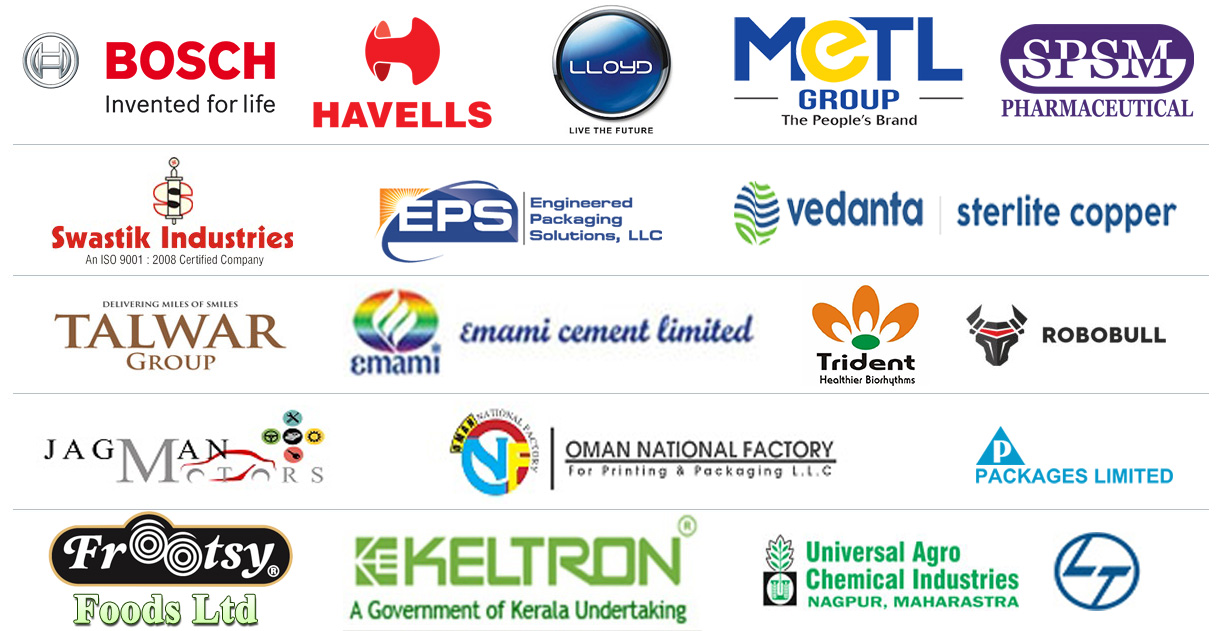
Our Approach
- Our research reports comprehensively cover Indian markets (can be modified as per your country), present investigation, standpoint and gauge for a time of five years*.
- The market conjectures are produced on the premise of optional research and are cross-accepted through associations with the business players
- We use dependable wellsprings of data and databases. What's more, data from such sources is handled by us and incorporated into the report
Why buy EIRI reports?
- Our project reports include detailed analysis that help to get industry Present Market Position and Expected Future Demand.
- Offer real analysis driving variables for the business and most recent business sector patterns in the business
- This report comprehends the present status of the business by clarifying a complete SWOT examination and investigation of the interest supply circumstance
- Report gives investigation and top to bottom money related correlation of real players/competitors
- The report gives gauges of key parameters which foresees the business execution





















